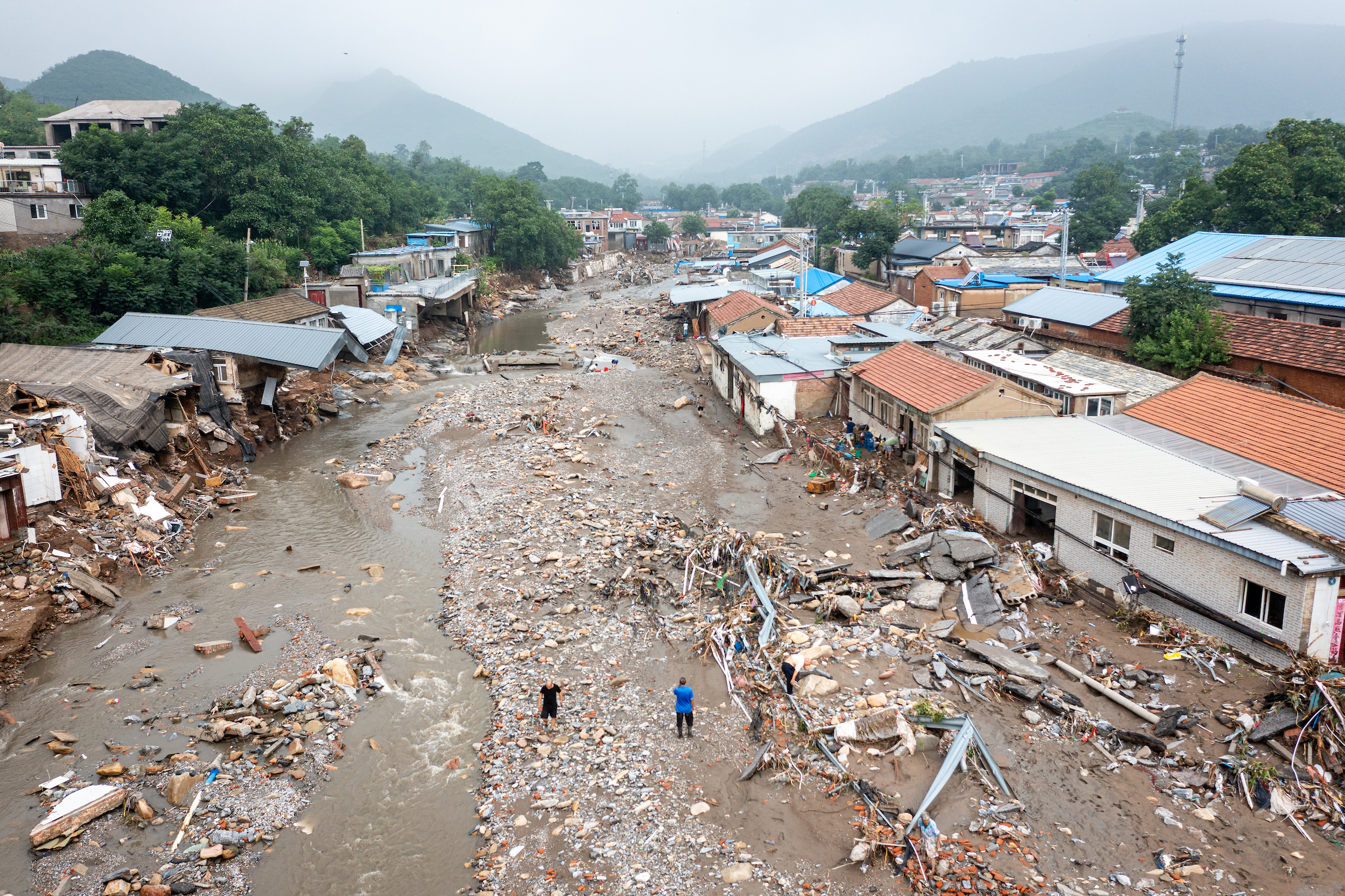The heavy rain had been pounding for three days straight. I peered through the raindrops running down my window as streaks of lightning crackled and thunder echoed in the distance above the mountains.
News started to trickle in. Record rains. Rumors of landslides. Floods engulfing villages.
I prepared my equipment and started charging drone batteries. I knew that as soon as the rain stopped, I would need to go to the mountains.
My social media feeds were awash with random pictures and videos. Broken roads and bridges. Buried cars. Houses swept away. Typhoon Doksuri was, according to Reuters, a “record-breaking rainfall” and one of the “worst storms in 140 years.” Because of the damage, I knew that traveling by bicycle would be the only way for me to reach some of the worst affected areas, which were about 30 kilometers from where I lived. The air was intensely humid, and the streets had turned to mud. I had to stop at points to carry my bike through the debris.
“I can’t quite believe it. I’ve never seen the river as full as it is today.” I said these words into my GoPro, as I tried to convey my intense surprise at what I was seeing while passing by the Yongding River in west Beijing. The river, normally a quiet and meandering stretch of water, was now an angry torrent. Churning waves carried large trees, along with pieces of small buildings. I stood and watched in awe.
I found my way to Tanzhesi Village, a quiet rural hamlet I had visited many times before, famous for its local Buddhist temple – a structure that dates back almost 1700 years. As I launched my drone, the live feed revealed the utter destruction. What had once been small and peaceful streams through the village had turned into a deluge strong enough to pick up whole cars like lightweight children’s toys. Homes were reduced to rubble. Residents stood in the river’s shallows like stunned fish.
I flew the drone across the broken landscape and tried to capture the destruction. The floods had washed out the main road that ran through the village, so I looked for figures in my frame that I could capture in order to provide some scale to the damage. In this image, villagers looked around, seemingly lost in their own neighborhood. Where they stood was once a busy main road through the village. Now, it resembled a riverbed.
Having covered the climate crisis for almost 20 years, I have seen some of the worst impacts affecting our fast-changing world. Sea-level rise in Indonesia, forest fires in Cambodia, drought in India. Just a few of the crises I had covered. But this was the first time I had witnessed such devastation in a place that I called home.
By focusing on the destruction in the aftermath of the floods in Beijing, especially destroyed and damaged cars and structures, I hope it elicits a pause in the viewer to reflect on the consequences of extreme weather in the age of the climate crisis. Nature does not care about us. It does not care about our inventions of convenience. It will continue to toss us aside as the crisis intensifies. The drone allowed me to convey this message in a unique way.



